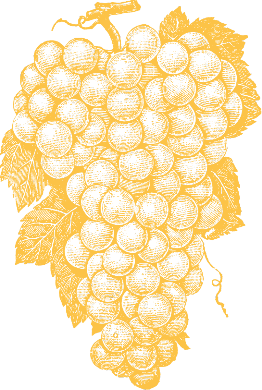Artwork depicts meeting of Sam Houston and Indian Nations on Grape Vine Prairie in a spirit of peace and friendship
MEDIA CONTACTS:
Emily Henvey
Office: 1.817.410.3529
Cell: 214-732-9841
EHenvey@GrapevineTexasUSA.com
GRAPEVINE, TEXAS (August 24, 2021) – Grapevine’s newest work of public art, “Peace Circle,” will be unveiled on Peace Plaza at Grapevine Main Station on Saturday, September 18 from 1 p.m. – 2:30 p.m. Festivities and educational presentations will occur from 11 a.m. – 5 p.m. during the 35th Annual GrapeFest® - A Texas Wine Experience, presented by Bank of the West.
WHAT IS PEACE CIRCLE?
“Peace Circle” is an interpretation of a moment in time of a meeting of Republic of Texas President Sam Houston and 10 American Indian chiefs/ captains on the Grape Vine Prairie in 1843. The work of public art features 11 bronze statues standing 1.25 percent larger than life size, representing Republic of Texas President Sam Houston and American Indian chiefs/ captains from the Delaware, Chickasaw, Waco, Tawakoni, Keechi, Caddo, Anadarko, Ioni, Biloxi and Cherokee Nations.
Sam Houston and the tribal leaders met in a spirit of friendship, peace, hope and trust in an effort to establish a place – a line that would not be crossed – where the tribes could live in peace. The Peace Circle meeting later led to the signing of the Treaty at Bird’s Fort on September 29, 1843. This treaty defined Indian Nations and European settlement boundaries and was one of the few Indian treaties ratified by the Republic of Texas Senate.
DEDICATION CEREMONY AND EVENTS
The dedication ceremony will consist of representatives from the tribal nations, the Sam Houston Memorial Museum and members of the Peace Circle Advisory Committee. Though the Comanches were invited but did not attend the original Peace Circle meeting on the Grape Vine Prairie in 1843, they will be attending the “Peace Circle” unveiling ceremony.
The dedication ceremony will begin with a Land Acknowledgment that states that Grapevine respectfully acknowledges all Indigenous People who have lived on the Grape Vine Prairie since time immemorial and reaffirms friendship and relationship with the 10 nations who met here with Sam Houston in 1843.
The ceremony will also include the “Wyandotte Thanksgiving Address,” the words before all else, shared by Sallie Cotter Andrews, Wyandotte Nation. This will be followed by a Blessing by Eddie Sandoval, Apache Nation and Leslie Thunderhawk, Rosebud Sioux Nation as well as a presentation of the American, Texas and tribal flags with a Comanche flag song.
Additionally, Peace Medals will be presented to representatives of each Indian nation, signifying that Grapevine reaffirms the commitment to peace and friendship Sam Houston promised in 1843. Each medal incorporates a replica of the original 19th century presidential peace medal design depicting a handshake, peace pipe and tomahawk. The ceremony will close with Comanche drum music followed by a friendship dance.
Festivities after the dedication will include educational events on Peace Plaza and demonstrations of art and music by Cherokee National Treasures Lisa Rutherford, Cathy Abercrombie and Tommy Wildcat.
PEACE CIRCLE LEADERS
(See additional sheet for full, detailed descriptions.)
The chiefs and captains represented in “Peace Circle” stand in the order in which they signed the Treaty of Bird’s Fort in counter clockwise positions and in a circle, honoring traditional lifeways.
·General Sam Houston, President of the Republic of Texas
The statue of Sam Houston depicts him as he was dressed in that final meeting – wearing his velvet, fox-embroidered suit, his silver spurs and an Indian blanket thrown over his shoulder to proclaim his brotherhood with the 10 chiefs and captains who had gathered for peace.
·Delaware Chief Roasting Ear
Chief Roasting Ear, the patriarch of the Delaware Indians in Texas, was an orator, councilor and diplomat, and was the first chief to sign the Treaty at Bird’s Fort.
·Chickasaw Captain Ishteukatubby
Captain Ishteukatubby was described on the record in the United States Supreme Court as “a Chickasaw in whom every confidence can be placed.” Captain Ishteukatubby’s descendants are still active in their nation and will be present.
·Waco Chief Acahquash
Chief Acahquash, revered friend of President Sam Houston, had a great reputation as a negotiator and was a mediator between the Republic of Texas and the Penateka Comanche.
·Tawakoni Chief Kechikaroqua
Sometimes called the Old Tawakoni Chief, Kechikaroqua was a highly respected elder who served as the principal chief of the Tawakoni and was the acknowledged chief of the allied tribes of Texas.
·Keechi Chief Kateahtick
Chief Kateahtick was elected by the Keechi warriors to serve as the principal chief of the Keechi people. In 1843, he was for peace, but only trusted one white man, Sam Houston.
·Caddo Chief Red Bear
Chief Red Bear was an articulate and wise man who said, “I am determined to lay down the hatchet against all white and red men and seek a country of peace.”
·Anadarko Chief Jose Maria
Chief Jose Maria, or Caddi Ha-Iesh, was a highly respected principal chief. President Sam Houston proclaimed, “He is a great man and a good friend.”
·Ioni Chief Towaash
Because of his leadership, in July 1846 Chief Towaash went to Washington, D.C., to meet President James K. Polk and received a large silver James K. Polk Peace Medal.
·Biloxi Chief Hoyo Tubby
Chief Hoyo Tubby signed the Treaty of Bird’s Fort, committing the Biloxi people to the terms of the treaty of peace and friendship.
·Cherokee Captain Chicken Trotter
The youngest and the final leader to sign the Treaty of Bird’s Fort, Captain Chicken Trotter, was actually Devereaux Jarrett Bell who used his alias as his treaty signature.
ARTISTIC CRAFTSMANSHIP AND HISTORICAL ACCURACY
Members of the Peace Circle Advisory Committee thoroughly researched Sam Houston and the American Indian representations to ensure their accuracy. Each chief’s physical attributes and the finest details of their 1843 clothing were developed from consulting tribal members, studying photographs, paintings and/or relatives to ensure that the representations are accurate to each tribe. This information has been approved by the tribal nations they represent.
STANDING THE TEST OF TIME
From their physical appearance to the manner of their dress, each larger-than-life statue in “Peace Circle” invites visitors to travel back in time and learn about the lives of the first people. This artwork serves a reminder of Texas’ rich history as well as a recognition of the area’s strong American Indian presence. Universally, the men represented serve as an inspiration through their example of wise leadership and mutual respect.
ABOUT THE ARTIST
The City of Grapevine commissioned Grapevine artist-in-residence Linda Lewis to recreate the moment of this historic meeting on the Grape Vine Prairie. Linda Lewis, born in Lubbock, Texas, received her art education in Pittsburgh, Pennsylvania. Utilizing detailed research by the Peace Circle Advisory Committee, Lewis has created and overseen the production of “Peace Circle” at the Grapevine Foundry located in the Cotton Belt Railroad Historic District, 701 S. Main St.
As Grapevine’s artist-in-residence and through Lewis’ art education program, area students, as well as students and adults with special needs, worked alongside Lewis through various steps of the artistic process in the development of “Peace Circle.”
For more than five years, she has been the owner/operator of the Grapevine Foundry and Fine Arts Program, bringing two decades of experience working with bronze to Main Street. She is one of few artists who does all mold making, wax working, sand blasting, bronze casting, welding and patina finishing.
PEACE CIRCLE ADVISORY COMMITTEE:
Paul W. McCallum, Advisory Committee Chairman, Grapevine Convention & Visitors Bureau; Dr. Sam Haynes, Professor and Director, Center for Greater Southwestern Studies, The University of Texas at Arlington; Matt Reed, Guthrie, Oklahoma; Eddie Sandoval, Apache Nation, Fort Worth; Leslie Thunderhawk, Rosebud Sioux Nation, Duncanville; Sallie Cotter Andrews, Wyandotte Nation, Grapevine Convention & Visitors Bureau; Cody Jolliff, Grapevine Convention & Visitors Bureau; and Linda Lewis, Artist, Grapevine Foundry.
INDIAN NATIONS ADVISORS:
Delaware Nation, Sonnie Allen; Chickasaw Nation, Laura A. Stewart; Wichita and Affiliated Tribes, Gary McAdams; Caddo Nation, Derek Hill; Tunica-Biloxi Tribe of Louisiana, John Barbry; and Mount Tabor Indian Community, Rusk County, J. C. Thompson.
ABOUT GRAPEVINE, TEXAS
Historic Grapevine, Texas, centrally located between Fort Worth and Dallas, is the premier go-to destination when planning a getaway or vacation in North Texas! Step back in time on Historic Downtown Main Street with a collection of charming boutiques, art galleries and bistros and cafes. Enjoy fantastic hotels and resorts, great attractions for the entire family, a wide variety of outdoor recreational activities, exquisite winery tasting rooms, world-class shopping and much more. For more information, visit GrapevineTexasUSA.com.

